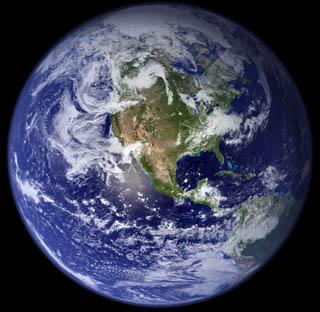Study challenges commonly held theories on formation of Earth’s atmosphere

Washington, Sept 20 : Geochemists at Rensselaer Polytechnic Institute have challenged the commonly held ideas about how gases are expelled from the Earth.
The team, lead by Prof E. Bruce Watson, has found strong evidence that argon atoms are tenaciously bound in the minerals of Earth’s mantle and move through these minerals at a much slower rate than previously thought.
The team found that even volcanic activity is unlikely to dislodge argon atoms from their resting places within the mantle.
Prof. Watson said this was in direct contrast to widely held theories on how gases moved through early Earth to form our atmosphere and oceans.
The team, which included Rensselaer postdoctoral researcher Jay B. Thomas and research professor Daniele J. Cherniak, developed reams of data in support of their emerging belief that argon resides stably in crystals and migrates slowly.
“We realized from our initial results that these ideas might cause a stir. So we wanted to make sure that we had substantial data supporting our case,” said Prof. Watson.
As part of the experiment, the team heated magnesium silicate minerals found in Earth’s mantle, which is the region of Earth sandwiched between the upper crust and the central core, in an argon atmosphere.
They used high temperature to simulate the intense heat deep within the Earth to see whether and how fast the argon atoms moved into the minerals.
Findings revealed that the minerals took up Argon in unexpectedly large quantities, but at a slow rate.
“The results show that argon could stay in the mantle even after being exposed to extreme temperatures. We can no longer assume that a partly melted region of the mantle will be stripped of all argon and, by extension, other noble gases,” said Prof. Watson.
Prof. Watson said the findings could change the way scientists have viewed the formation of Earth’s atmosphere and those of our distant neighbours, Mars and Venus.
The data has also thrown into doubt the timing and mechanism of atmospheric formation on terrestrial plants, he said.
The research appears in the Sept 20 issue of the journal Nature. (ANI)